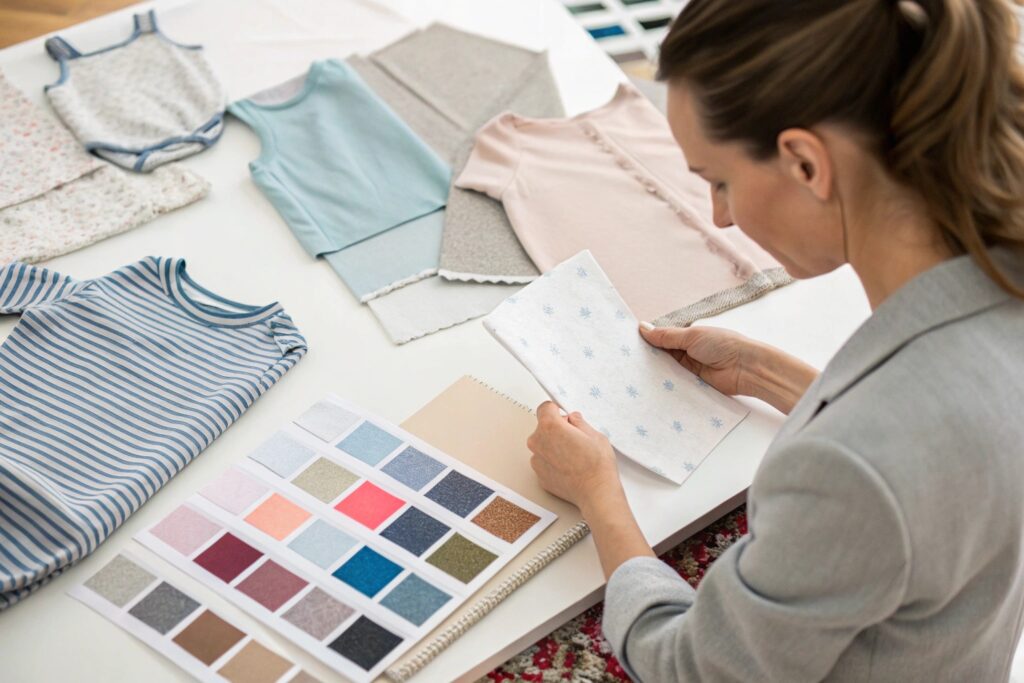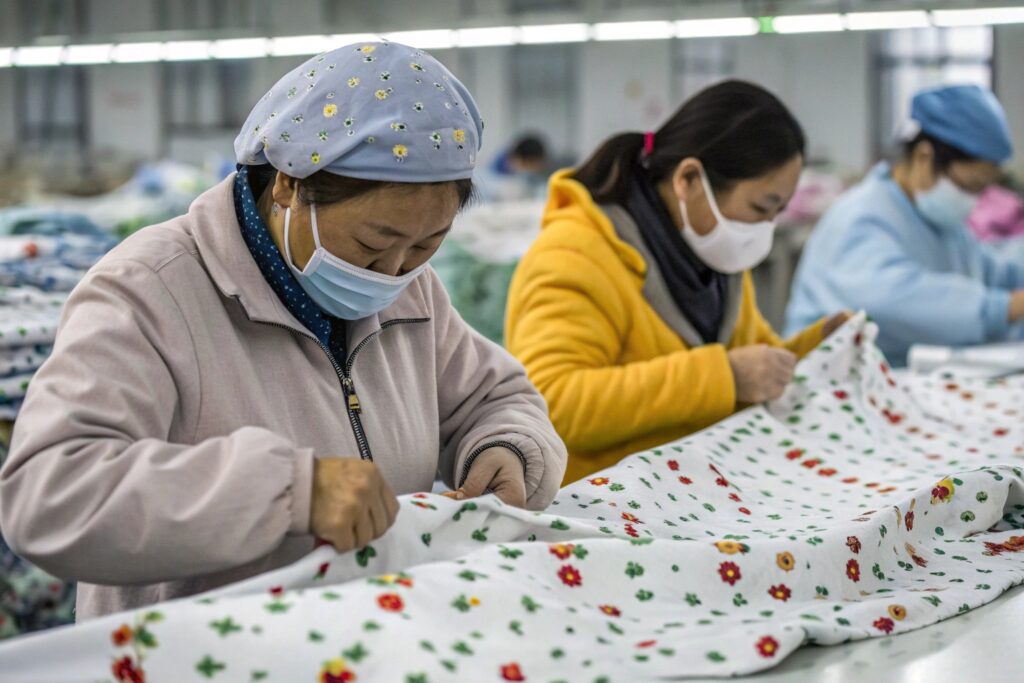You’ve placed your kidswear order. Weeks pass, and you’re still waiting. What’s taking so long?
Kidswear orders often take longer to produce due to fabric sourcing, complex sampling, strict safety standards, low MOQ challenges, and customization requirements. Each step adds to the lead time—but it’s all part of ensuring quality and compliance.
In this article, I’ll break down the full production timeline, the causes of delays, and how to keep your orders on track.
Key Stages in Kidswear Production Timeline?
From concept to delivery, producing kidswear involves multiple steps that take time and coordination.
The main stages in kidswear production include tech pack development, sampling, fabric sourcing, cutting, sewing, printing, labeling, quality checks, and shipping. Each of these adds to the lead time.

Breakdown of the kidswear production process:
| Stage | Time Required | Notes |
|---|---|---|
| Tech pack development | 2–5 days | Depends on design clarity |
| Sample making | 7–15 days | Includes patterning + material prep |
| Fabric sourcing | 5–15 days | Varies if custom-dyed or imported |
| Cutting and sewing | 10–20 days | Based on quantity + factory capacity |
| Printing/embroidery | 5–10 days | Custom graphics require screens setup |
| Label and trim production | 5–7 days | Must match brand packaging needs |
| Quality inspection | 2–5 days | Includes wash/shrinkage tests |
| Packaging and shipping | 5–10 days (air), 30+ (sea) | Varies by method |
Total production timeline: 30–60 days (excluding pre-production sampling and peak season delays)
At Fumao, we plan each stage with buffer time to ensure smooth transitions and realistic ETAs.
How Fabric Sourcing Delays Affect Delivery?
Fabric is the foundation of every kidswear garment—but sourcing the right fabric isn’t always fast.
Fabric sourcing delays can push back the entire production timeline, especially if the fabric is custom, out of stock, imported, or needs dyeing and testing before approval.

Common causes of fabric delays:
| Cause | Delay Impact |
|---|---|
| Custom color dyeing | 5–10 extra days |
| Out-of-stock materials | Requires reweaving or substitution |
| Imported fabric (e.g., bamboo) | Customs or shipping delays |
| Lab dips and approvals | Slow client feedback = bottlenecks |
How it impacts production:
- Cutting can’t start without fabric
- Samples may be postponed
- Order may miss shipping windows
To minimize delays, Fumao offers in-stock fabric options for clients with tight deadlines, and shares real-time updates from the mill.
Impact of MOQ and Customization on Lead Time?
Small brands often want unique styles with low quantity. But these factors increase production time.
Lower MOQs and high customization can lengthen lead time because factories batch small runs separately and need more time to set up custom patterns, prints, and trims.

How MOQs affect scheduling:
| Order Size | Production Priority |
|---|---|
| 10,000+ pcs | High priority, faster line allocation |
| 500–2,000 pcs | Medium, may wait for machine availability |
| 200 pcs or less | Batched with other clients or done in downtime |
Customization that adds time:
- Unique prints (screen prep, color separation)
- Custom labels or embroidery (trim production delays)
- Special fabrics or washes (extra processing time)
- Multiple size breakdowns (grading + cutting complexity)
At Fumao, we offer low-MOQ support for startups—but we also explain upfront if custom work adds time so clients can plan accordingly.
How to Avoid Delays in Bulk Kidswear Orders?
Delays are common—but with the right strategy, many can be avoided or minimized.
To avoid delays in kidswear orders, confirm fabric availability early, finalize tech packs before sampling, respond quickly to approvals, and work with factories that communicate clearly and meet deadlines.

Tips to reduce production delays:
| Tip | Why It Helps |
|---|---|
| Use in-stock fabrics | Skip dyeing and weaving time |
| Approve samples within 24–48 hours | Keeps production moving |
| Finalize sizes and trims upfront | Avoids mid-process changes |
| Order during off-peak seasons | Avoids factory congestion |
| Work with experienced suppliers | They know how to prevent common issues |
Tools to support timelines:
- Production calendars shared with clients
- Live photo updates during sewing and printing
- QC reports before packing to avoid rework
At Fumao, we manage delivery expectations from the start and build buffer time into every project to stay ahead of schedule.
Conclusion
Kidswear production takes time because of fabric prep, sample approvals, strict quality checks, and customization. But by understanding the process, working with the right supplier, and planning ahead, you can reduce delays and launch your kidswear line on time—with confidence.










